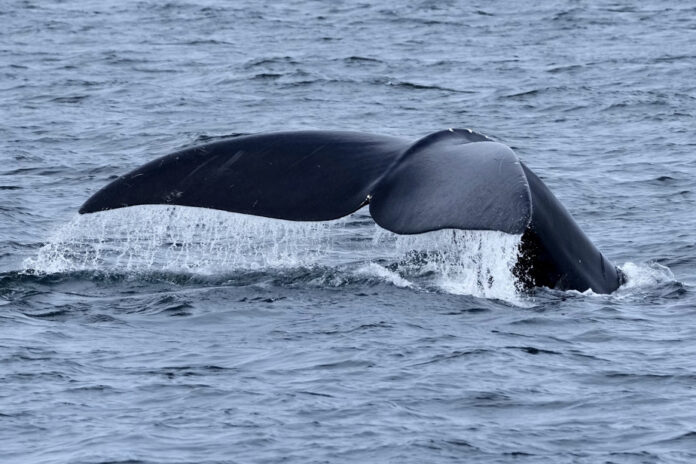Whale Seeker was founded in 2018 by two biologists and a software developer, which already hints at the nature of the company: bringing together technology and science (but also human common sense) to better manage whales, a major issue in the maritime world.
Initially, the biologist Emily Charry Tissier, who participated in the genesis of the project, was interested in the images of the sea which made it possible to see the narwhals, with photos from drones or planes. Already, we could recognize them (the males often having a tusk) and better understand their behavior, according to their movements at sea. Rimouski where the company has its offices. Are they in the position of fighter planes? It would mean that they are traveling. If they are oriented in all positions, it means that they are eating, socializing. »
But this analytical work was gigantic and time-consuming. Everything was done by hand. We could surely gain in efficiency, she told herself. There was a need for scientists there. So, a business opportunity to seize.
So much for the initial impulse. Whale Seeker wanted to find a way to observe whales more effectively to better understand and protect them.
Because we talk more and more about the protection of whales and, let’s face it, the concept causes headaches for certain links in the chain – the fishing industry, in particular, for whom this issue sometimes comes with costly constraints. .
The trio’s goal is to “bridge the gap between profitability and sustainability”.
The technology developed by Whale Seeker makes it possible to detect marine mammals among boats, buoys and other masses that end up in the ocean, which other means of observation do not do. Fisheries and Oceans Canada, one of the company’s clients, provides aircraft images that are analyzed using artificial intelligence. “So it’s an ethical use of AI (artificial intelligence),” says Emily Charry Tissier. And sensible, because when technology has a doubt, a scientist analyzes these more nebulous images.
“If Fisheries and Oceans Canada monitors a population and sends 50,000 images, cites the biologist as an example, instead of going through it all by hand, we go through it through our algorithm, our artificial intelligence. It annotates the whole database, but the AI sends us back some images where it is not sure. Is it a whale or not? »
A scientist can do the analysis.
These details are then used to review the entire data set – 50,000 images! In doing so, the entire analysis gains in precision.
The fact that the primary information sources are diverse also makes the tool “very, very, very strong,” says Emily Charry Tissier, who points out that this data is often very expensive to acquire.
The whole analysis process is also done much faster than if a human was going through each of the photos. But there is more: the fact that the machine has replaced humans, in large part, in the analysis of images also eliminates interpretations. “We must know that if there is a population that changes, it is not the result of bias on the part of an observer. »
The small business is growing. The team has eight members and is recruiting. Clients come from the public and private sector. Needs vary greatly, depending on the clientele, but all have in common the desire for better monitoring of marine mammals. It can be to define a management plan, for the public, or to properly manage construction projects, for the private sector.
Eventually, could Whale Seeker work with the fishing industry?
“It’s a whole market we’re interested in,” says the company’s co-founder, who says the tools are adaptable enough to suit a broad customer base – perhaps we could prevent the escapes of marine mammals that end up in the Old Port of Montreal, for example.
Whale Seeker’s tool will potentially be able to track whale movements in real time. This is the next step.















